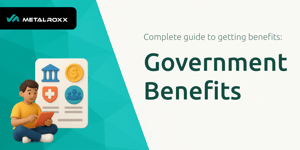As inflation reaches multi-decade highs, households and investors face unprecedented pressure on budgets, savings, and long-term plans. Prices rise unpredictably, making yesterday’s financial roadmap obsolete.
This comprehensive guide explores practical methods to protect your finances, offering both tactical steps and strategic insights to help you preserve wealth and maintain progress toward your long-term goals.
Understanding Inflation: Definitions and Dynamics
Inflation represents the gradual loss of purchasing power as prices across the economy rise. The Federal Reserve targets a 2% annual rate, but recent years saw peaks near 8–9%, the highest in four decades, before moderating to around 2.4% in early 2025.
These fluctuations stem from supply chain disruptions, fiscal stimulus, and evolving monetary policy. By understanding the underlying forces, you can tailor your financial plan to withstand both spike-driven and persistently elevated inflation scenarios.
Key Financial Challenges in High Inflation
When inflation accelerates, everyday life and long-term planning both suffer. The following challenges become particularly acute:
- Erosion of savings’ purchasing power
- Increased cost of living and unpredictability of prices
- Growing burdens of variable and high-interest debt
- Investment risks in fixed-income products
Left unchecked, these pressures can erode confidence and derail critical objectives like home ownership, education funding, and retirement preparedness. A proactive stance is essential to preserve financial health.
Core Strategies for Resilience
To build stability when prices surge, implement these nine core tactics. Each plays a distinct role in safeguarding wealth:
- Emergency fund management
- Spending and budget prioritization
- Debt reduction and elimination
- Portfolio diversification
- Fixed-income protection
- Inflation-adjusted securities
- Tangible and alternative asset allocation
- Income growth and cost control
- Regular plan reviews and discipline
An a truly well-stocked emergency fund in high-yield savings ensures you can cover unexpected costs even as every expense climbs. Aim for three to six months of living expenses in a liquid account that grows with market rates.
Effective spending and budget prioritization requires categorizing expenses by necessity. Identify essentials—housing, utilities, groceries—and trim nonessential purchases. Monitoring price trends helps you anticipate spikes and adjust timing on big-ticket items like appliances or vehicles.
Eliminating high-interest obligations early is vital. For credit cards or adjustable-rate loans, rising interest rates can multiply carrying costs. A focused repayment plan frees up monthly cash flow and reduces total interest paid over time.
To diversify across asset classes, balance holdings among equities, real estate, and commodities. Stocks often outpace inflation as companies pass costs to consumers. Rental properties can see both income and value appreciation, while select commodities can hedge sudden price shocks.
Long durations in bonds erode returns when inflation climbs. Instead, favor shorter maturities or ladder certificates of deposit to maintain liquidity and capitalize on rising rates without locking in below-market yields.
Consider government-backed Treasury Inflation-Protected Securities for guaranteed real returns. TIPS adjust principal with changes in the Consumer Price Index, ensuring your investment keeps pace with inflation, both through rising principal and inflation-linked coupon payments.
Allocating a portion of your portfolio to gold or other real assets can add intangible protection, though volatility and storage costs require careful sizing. Real estate, whether direct ownership or through REITs, offers tangible resistance through rent escalations and property appreciation.
Boosting income by negotiating wages, cultivating side projects, or acquiring new skills can offset living cost increases. At the same time, implement energy-efficient measures—like smart thermostats and LED lighting—to reduce utility inflation’s bite.
Finally, avoid impulsive decisions in response to short-term price jumps. Rash moves often lock in losses. Instead, regularly review and rebalance your portfolio to realign with your risk tolerance and long-term aspirations, especially as market conditions evolve.
Detailed Investment Approaches
High inflation particularly challenges fixed-income investors. Traditional long-term bonds often deliver negative real returns when coupon payments fail to keep pace with rising prices. By shifting toward laddered short-term instruments, you can reinvest maturing positions at higher prevailing rates, gradually improving portfolio yields.
Inflation-protected options like TIPS demand consideration for core bond allocations. These securities adjust their principal value in line with CPI changes, preserving purchasing power over extended horizons. Mutual funds and ETFs with TIPS exposure offer diversified, cost-efficient access for individual investors.
Adapting Your Income and Lifestyle
During high inflation periods, your income plan and daily habits warrant reevaluation. Seek salary reviews or freelance opportunities; calibrate pricing if you run a small business to reflect your increased costs. Building multiple income streams spreads risk and enhances resilience.
Resist the temptation of “lifestyle creep.” When nominal incomes rise due to cost-of-living adjustments, avoid inflating your baseline expenses. Instead, channel a portion of any pay increase into savings, investments, or debt reduction to fortify your financial foundation.
Maintaining a Long-Term Perspective
Inflation cycles are an inevitable facet of economic history. Although short-term volatility can feel daunting, keeping your long-term goals in focus helps you weather temporary storms. Pivoting strategies sharply in reaction to every data point can undermine compounding growth and lead to missed opportunities.
By sticking to a disciplined plan, you capitalize on market recoveries and guard against emotional decision-making. Remember that diversification and periodic rebalancing smooth returns and preserve your strategic asset mix, even as individual sectors diverge under inflationary pressures.
Conclusion
Facing high inflation requires both vigilance and adaptability. Through a combination of disciplined budgeting, strategic asset allocation, and proactive debt management, you can protect your purchasing power and keep your financial plan on track.
Embrace regular reviews, stay informed about economic indicators, and remain patient. With commitment to these principles, you can turn inflationary challenges into opportunities for growth and ensure your future goals remain within reach.
References
- https://www.unfcu.org/financial-wellness/protect-your-money-during-high-inflation/
- https://www.investopedia.com/articles/investing/080813/how-profit-inflation.asp
- https://www.lowewealthadvisors.com/strategic-financial-planning-in-a-high-inflation-environment/
- https://www.ombbank.com/blog/strategies-to-help-protect-your-assets-against-inflation
- https://wealth-counselors.com/blog/strategies-for-financial-resilience-during-high-inflation-times/
- https://www.morningstar.com/markets/why-inflation-still-poses-risk-stocks-bonds-2025
- https://www.investopedia.com/terms/i/inflation.asp
- https://bh-co.com/blog/financial-planning/managing-lifestyle-creep-during-high-inflation-a-guide-to-financial-stability/










